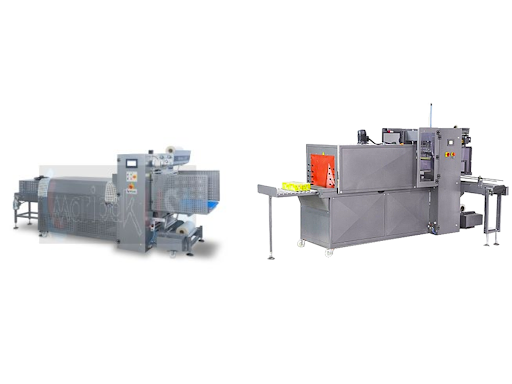Shrink packaging is a widely used method for wrapping and protecting products in various industries, from food to electronics. An automatic shrink packing machine plays a crucial role in efficiently sealing and shrinking film around products, ensuring secure packaging for transportation and display. Understanding how these machines work can help businesses optimize their packaging processes.
This guide provides a step-by-step breakdown of how an automatic shrink-packing machine functions and what makes it an essential tool in modern packaging.
Key Components of an Automatic Shrink Packing Machine
Before diving into the process, it is important to understand the main parts of a shrink-wrap packaging machine and their roles in the operation.
Film Dispenser
The film dispenser holds the shrink film, usually made of polyethylene, polyolefin, or PVC. It feeds the film into the machine as products move along the conveyor.
Conveyor System
The conveyor transports the product through the different stages of the shrink-wrapping process. It ensures a smooth and continuous flow, making the machine fully automated.
Sealing System
The sealing system consists of heated sealing bars or a cutting blade that trims and seals the shrink film around the product.
Shrink Tunnel
Once the product is sealed inside the shrink film, it passes through the shrink tunnel. The tunnel uses heated air to shrink the film tightly around the product, creating a secure and professional-looking package.
Cooling System
Some machines include a cooling system to set the shrink wrap in place and prevent deformation of the product.
Step-by-Step Process of Shrink Wrapping
Step 1: Loading the Product onto the Conveyor
The process begins when the product is placed onto the conveyor system. Depending on the machine, this step can be done manually or automatically in an integrated production line.
Step 2: Film Dispensing
As the product moves forward, the shrink wrap packaging machine pulls the shrink film from the film roll. The machine automatically measures and dispenses the correct amount of film based on the product’s size.
Step 3: Wrapping the Product
The machine wraps the film around the product as it moves through the system. In some cases, the product is enclosed in a single sheet of film, while in others, two sheets are used. The goal is to fully cover the product before sealing.
Step 4: Sealing the Film
Once the product is wrapped, the machine seals the film using heat. There are two common sealing methods:
- L-Bar Sealer: Uses a heated sealing bar to cut and seal the film in an L-shape, making it ideal for uniform products.
- Side Sealer: Continuously seals and trims the film along the side, making it suitable for packaging long or irregularly shaped items.
The sealing process ensures that the shrink film is securely enclosed around the product before moving to the next stage.
Step 5: Moving into the Shrink Tunnel
After sealing, the wrapped product enters the shrink tunnel. The tunnel has a heating element that blows hot air evenly across the product, causing the shrink film to contract tightly around it.
The temperature and speed of the conveyor inside the shrink tunnel can be adjusted based on the type of film used and the product’s size and shape.
Step 6: Shrinking the Film
As the product moves through the heated tunnel, the film shrinks and conforms to the product’s shape. The amount of heat applied is carefully controlled to prevent overheating, which could damage the product or create wrinkles in the film.
Step 7: Cooling and Setting
Once the product exits the shrink tunnel, it passes through a cooling area where fans or natural air help set the film in place. This step ensures a smooth, tight wrap that enhances the product’s appearance and durability.
Step 8: Final Inspection and Collection
The wrapped product is now ready for final inspection. At this stage, operators check for any defects in the seal or shrink wrap. The product is then collected from the conveyor for further processing, storage, or shipping.
Benefits of Using an Automatic Shrink Packing Machine
Increased Efficiency
Automatic shrink-packing machines significantly reduce manual labor, allowing businesses to package large quantities of products quickly and consistently.
Improved Product Protection
Shrink-wrapped products are protected from dust, moisture, and tampering, making them ideal for retail and shipping.
Cost Savings
By automating the packaging process, businesses can save on labor costs and reduce material waste, leading to higher overall efficiency.
Enhanced Product Presentation
Shrink-wrapped products have a clean and professional appearance, making them more appealing to consumers.
Conclusion
An automatic shrink-packing machine streamlines the packaging process by wrapping, sealing, and shrinking film around products with precision and efficiency. By understanding its key components and step-by-step operation, businesses can optimize their packaging workflow while ensuring high-quality, durable, and visually appealing products. Whether for food, electronics, or industrial items, a shrink wrap packaging machine is a valuable investment for improving packaging efficiency and product protection.








